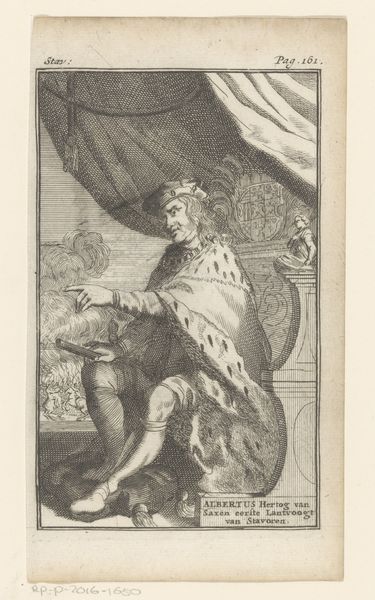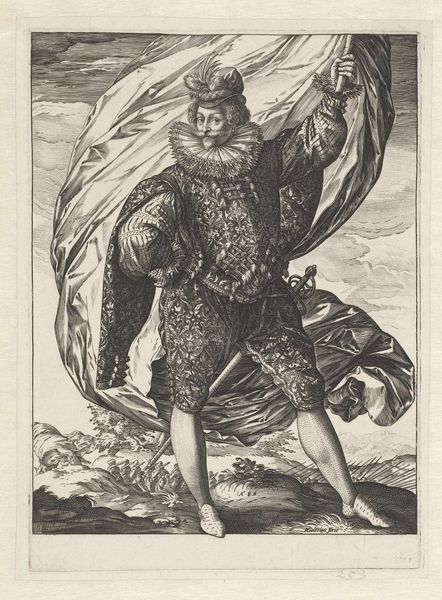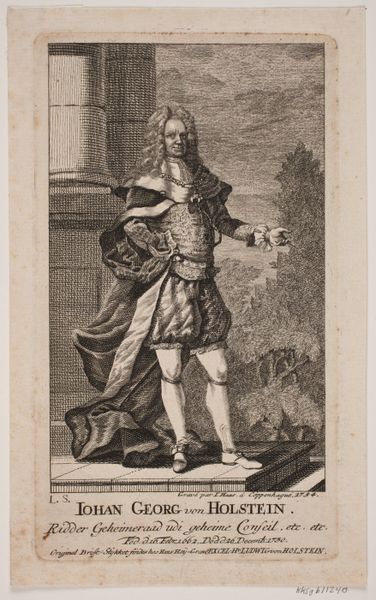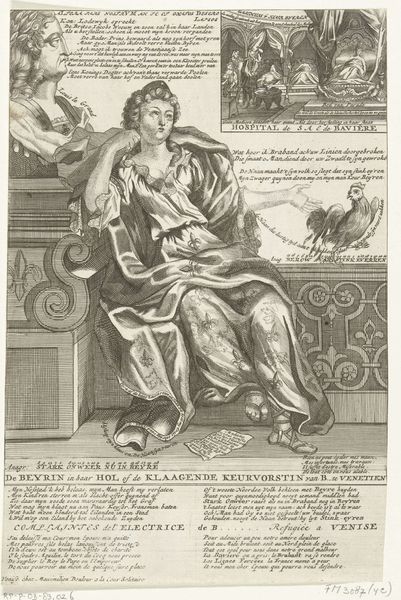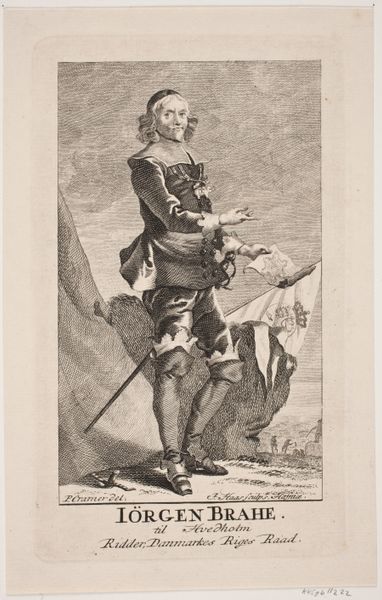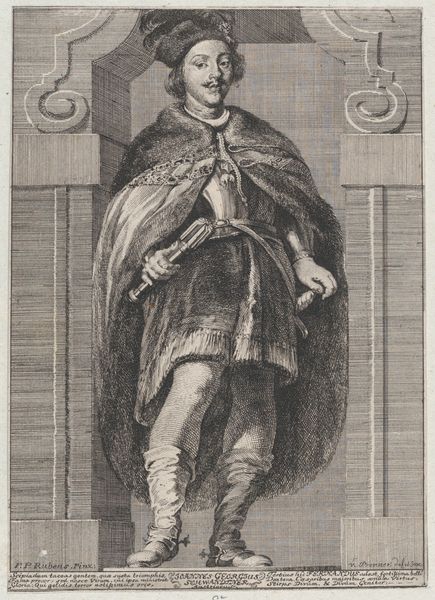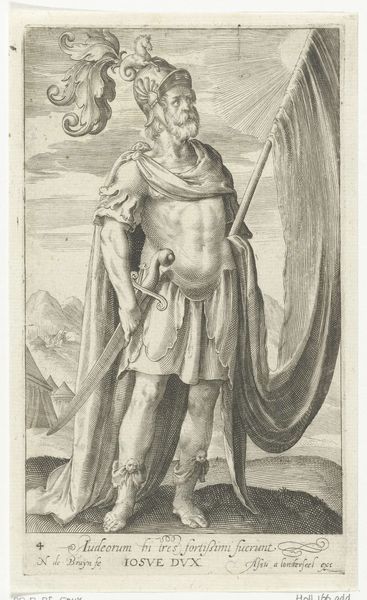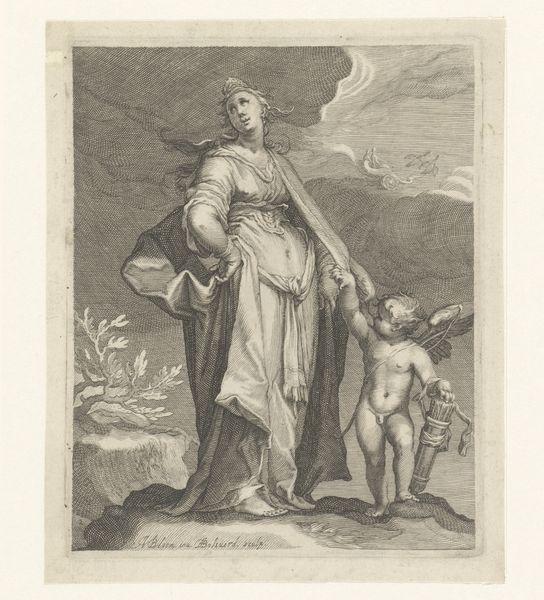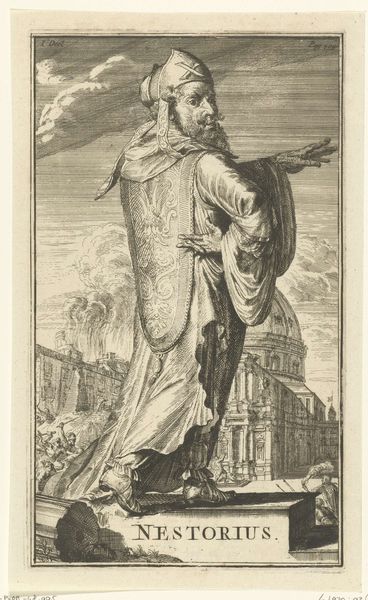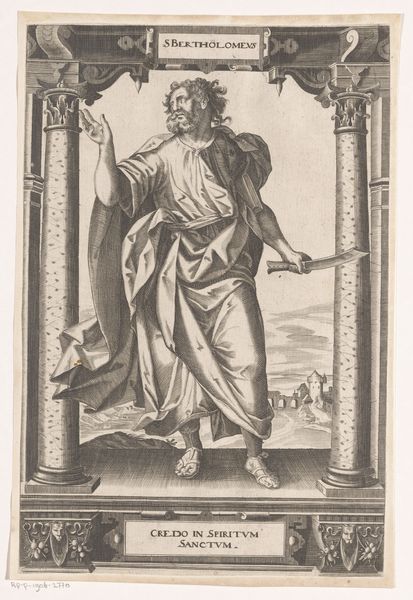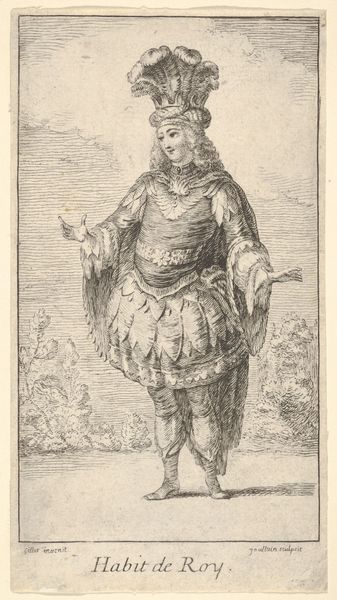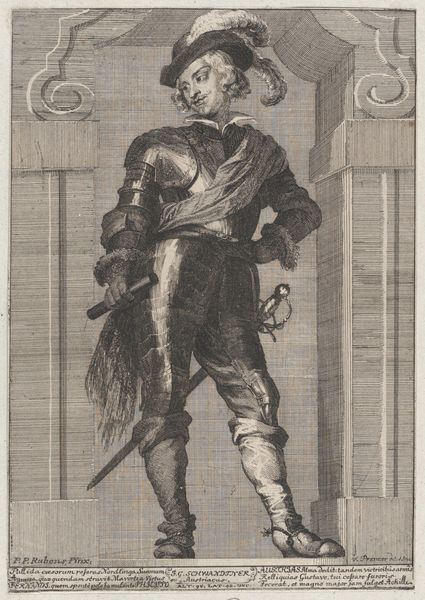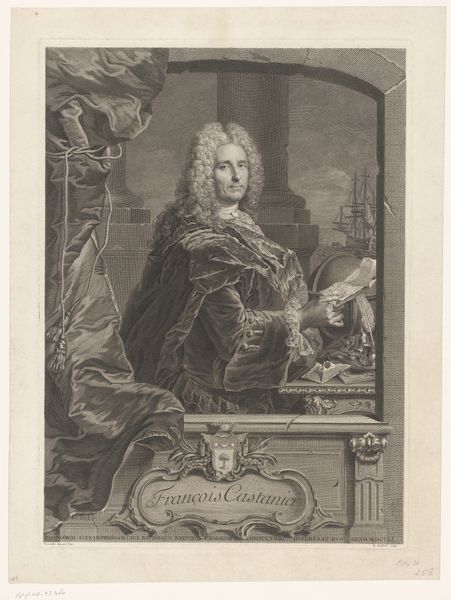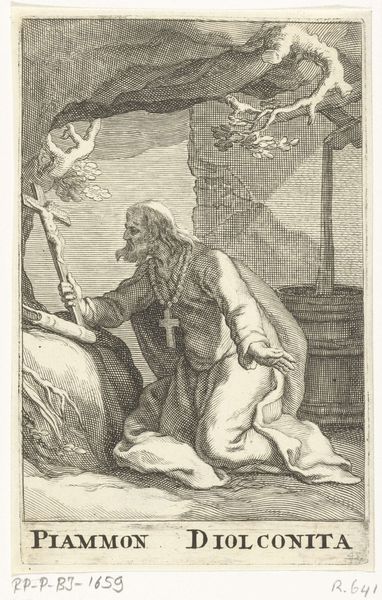
print, engraving
#
portrait
#
baroque
# print
#
figuration
#
history-painting
#
engraving
Dimensions: height 131 mm, width 81 mm
Copyright: Rijks Museum: Open Domain
Editor: This is a 17th-century engraving at the Rijksmuseum. It's a portrait of Albrecht III, Duke of Saxony. The duke looks to be directing troops into battle! How should we read into this portrait? Curator: I see this print as more than a historical record; it’s an assertion of power steeped in a very specific moment in the fraught 17th century. He’s positioned, look, seated above what appears to be a battle scene. How is that intended to position the viewer? Editor: So, not just a commemoration, but a calculated message about leadership? The power dynamics and visual language really place Albrecht in control. Curator: Precisely. Consider the setting: he's seated under a draped canopy with a heraldic shield behind him. The light is angled towards him as a form of symbolic stage lighting. What narratives were being enforced, and at whose expense? Editor: The contrast in dress highlights class differences - the armor of the warriors at his feet compared to the elaborate clothing he is wearing, sets the Duke far apart from those fighting. I think his class and power are further highlighted by how passive the Duke looks as he points, compared to those involved in the war scene. He doesn't even have to pick up a weapon to participate. Curator: Indeed, the active, male bodies engaging in war serve as contrast to his own power – in a period where military might often equaled influence, Albrecht positions himself both within and above that narrative. How might ideas of gender also be present? Editor: It sounds like Albrecht's portrayal in this print speaks volumes about not only his power but the values and biases of 17th-century society! Thank you! Curator: And about whose stories get told and how. It’s important to remember the communities affected by the events portrayed and those often left out of conventional historical narratives.
Comments
No comments
Be the first to comment and join the conversation on the ultimate creative platform.
